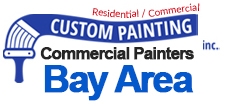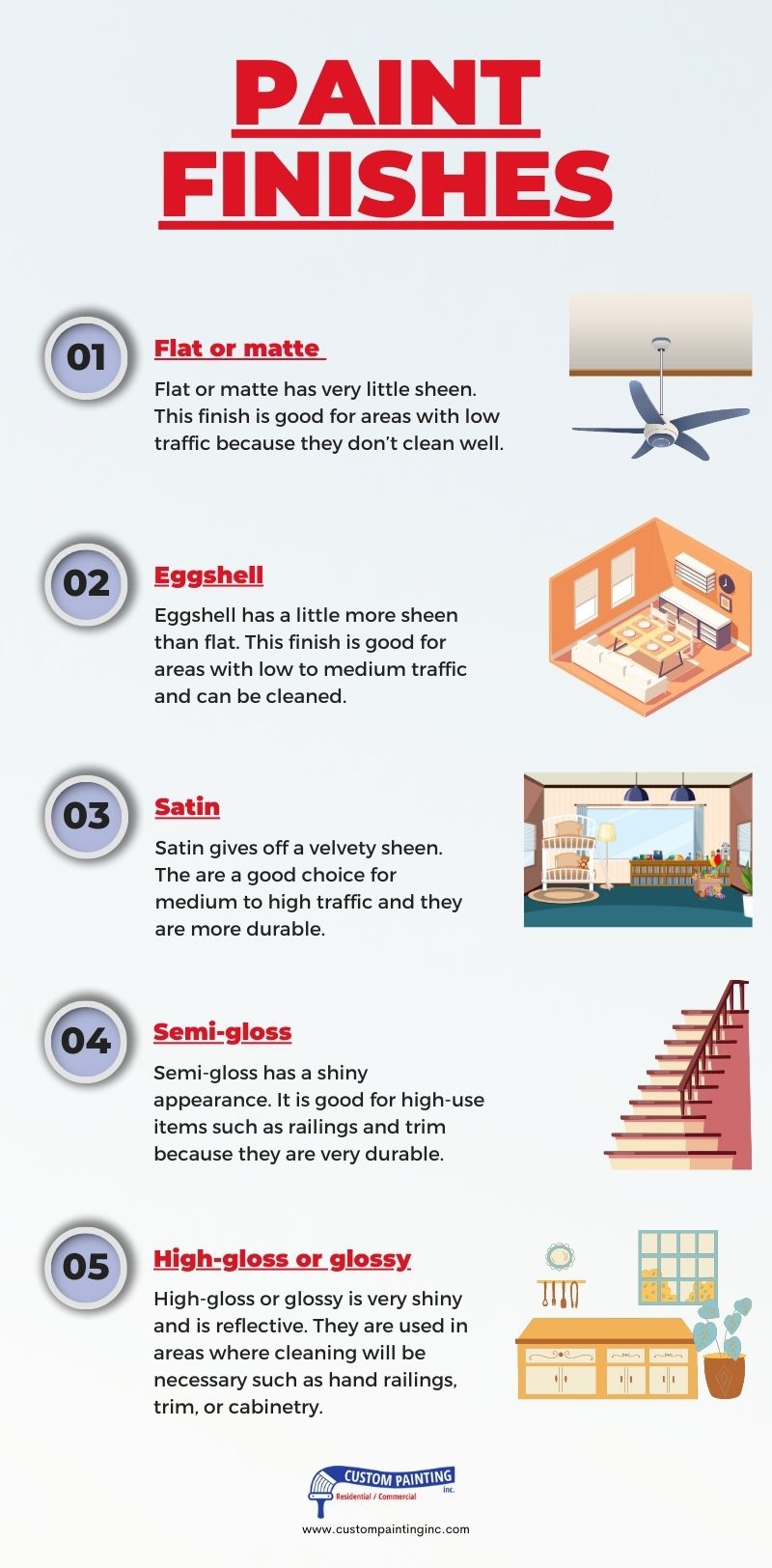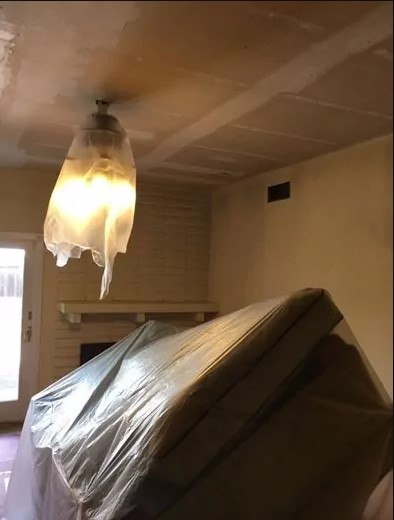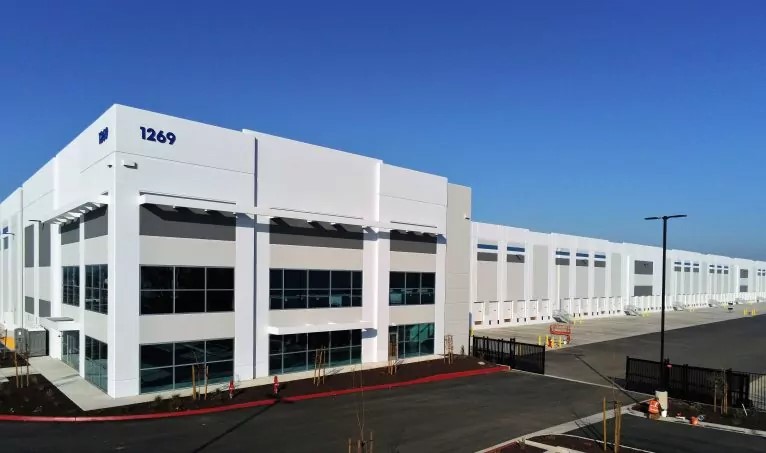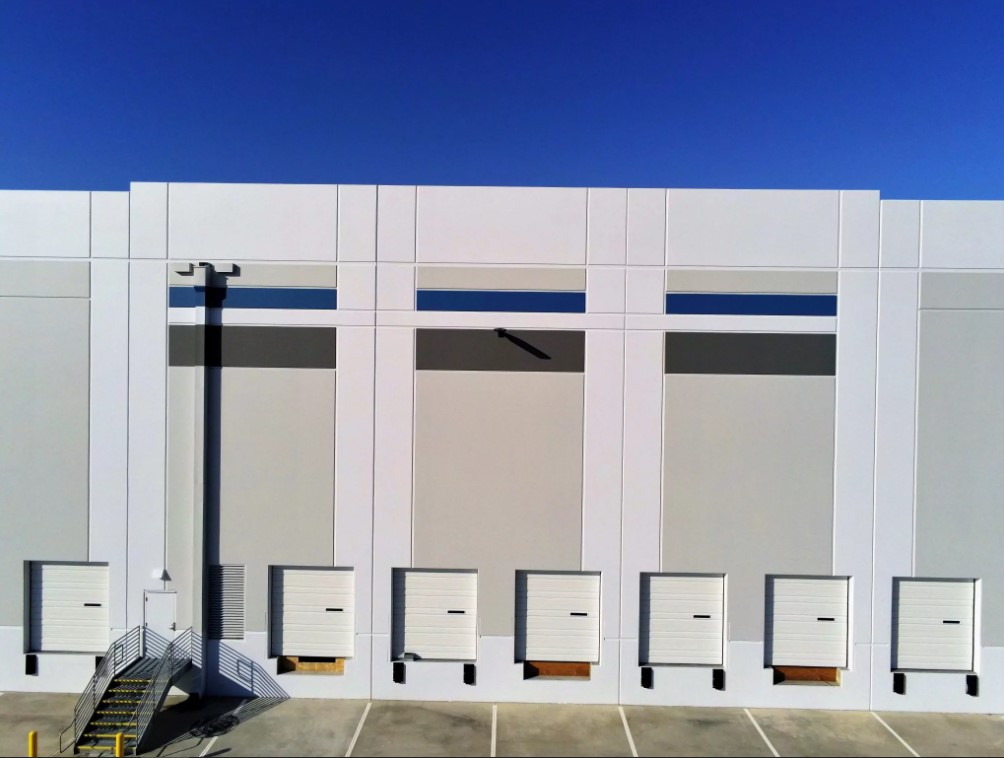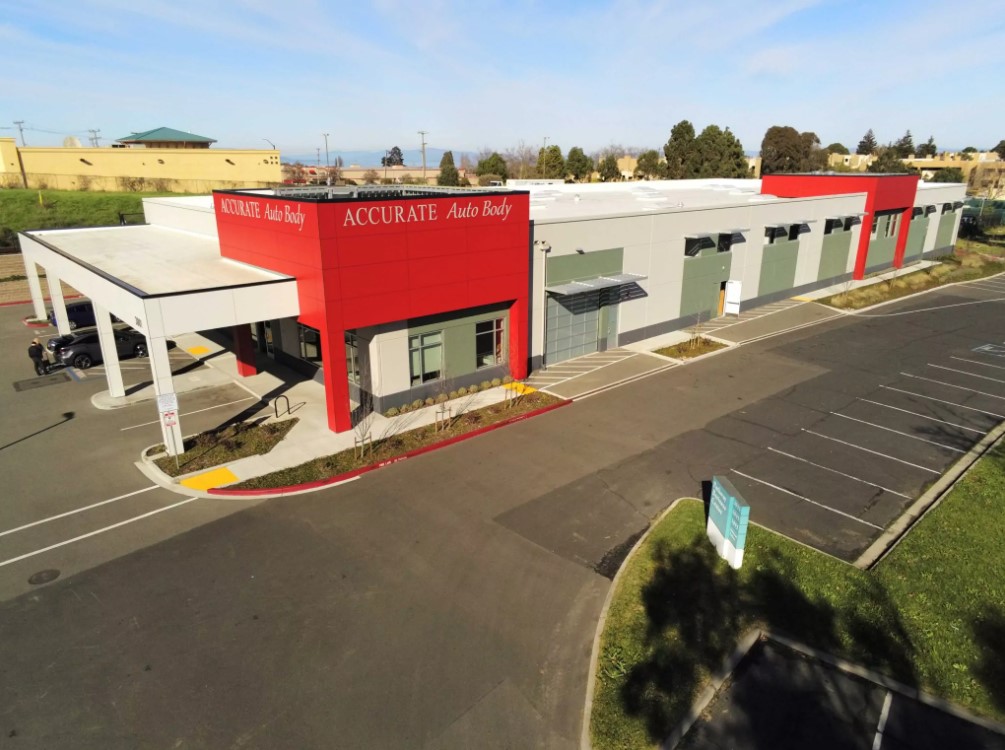Welcome to the intriguing world of painting, where colors come to life and blank canvases, or commercial buildings, are transformed into beautiful works of art. This thorough guide delves into all you need to know about painting, particularly emphasizing the enthralling world of professional painting. Commercial painting, a frequently disregarded area of the art world, possesses a certain allure that combines aesthetics, branding, and storytelling. Join us on this journey if you’ve ever wondered how a blank canvas may be converted into breathtaking artwork that captures the eye and delivers a compelling message.
Reasons to Paint
1. If You Plan to Sell the Property, Painting Raises Resale Value and Improves Curb Appeal
One important reason you should consider painting, particularly in commercial areas, is its potential impact on a property’s resale value and overall curb appeal. A fresh coat of new paint can work wonders in boosting the overall aesthetics and making a lasting impression, whether you’re a house owner wanting to attract potential buyers or a company owner aiming to create an appealing ambiance for consumers.
If you are selling a home, you know first impressions are everything. The same is true with commercial properties. Potential purchasers frequently influence the aesthetic appeal of space, and a well-maintained façade can considerably improve the property’s perceived value. A business building’s façade is its public face, and an old, faded, or outdated appearance can repel potential purchasers or cause them to undervalue the property. A well-executed paintwork may suddenly transform a bland, average structure into a visually spectacular masterpiece, instantly increasing curb appeal and garnering favorable attention.
2. Use Better Quality (Low-VOC or Zero-VOC) Paints
The paint quality is critical when you decide to paint a business. Choosing higher-quality paints, specifically low-VOC (Volatile Organic Compounds) or zero-VOC paints, has various advantages. These paints contribute to a healthier and more sustainable environment and improve interior air quality, minimize health risks, and provide long-term durability.
Low-VOC and zero-VOC paints are made with much less hazardous ingredients than regular paints. VOCs are compounds that evaporate quickly at room temperature and can harm human health and the environment. By selecting low-VOC or zero-VOC paints, you can reduce the amount of dangerous chemicals released into the air during and after the painting process.
3. Hides Stains, Handprints, and Marks
One of the major benefits of commercial painting is its ability to properly conceal stains, handprints, and blemishes that may build over time. Maintaining a flawless appearance in high-traffic areas or settings where cleanliness and presentation are critical can be difficult. On the other hand, a fresh coat of paint can work wonders in hiding flaws and restoring the visual appeal of the surroundings.
Stains can be unsightly and give a place an unkempt appearance, whether caused by spills, water damage, or ordinary wear and use. These flaws may be more visible on lighter-colored walls or in regions with plenty of natural light. Handprints and marks are ubiquitous in areas where people frequently interact, such as hallways, entryways, and public spaces. These marks can build and become more evident with time, detracting from the environment’s general cleanliness and professionalism.
4. Protects the Surface
Painting a commercial building protects surfaces from numerous environmental variables and wear and tear. Paint is a barrier that protects the underlying components from harm, increases their lifespan, and maintains the building’s long-term durability.
Moisture is one of the most severe dangers to commercial structures. Rain, humidity, and condensation can penetrate the surfaces over time, causing water damage, mold growth, and structural concerns. A well-placed coat of paint, on the other hand, produces a protective layer that works as a shield against moisture.
5. Makes Customers and Visitors Feel Welcome
Creating an inviting environment for customers and visitors is critical in commercial buildings, and painting plays a vital part in accomplishing this goal. The colors, aesthetics, and overall condition of a building can significantly impact the first impression and overall experience of visitors who enter. Commercial buildings can create a warm and appealing ambiance for clients and visitors by using the proper paint colors and maintaining a well-painted exterior and interior.
Color psychology is a highly effective tool for altering emotions and perceptions. Colors elicit many emotions and can set the tone for the entire customer or visitor experience. Warm and brilliant hues, such as yellows and oranges, instill a sense of energy and enthusiasm in the area, making it feel dynamic and active.
Types of Paint to Know
1. Acrylic Paint
Acrylic paint is a versatile and popular type of pigment floating in an acrylic polymer emulsion. Due to its durability, flexibility, and ease of application, it is used for painting many surfaces, including interior and exterior walls composed of concrete, stucco, brick, or drywall. Acrylic polymer, which serves as the binder that holds the pigments together and forms a solid film as the paint dries, is the fundamental component of acrylic paint. This binder gives acrylic paint its adhesive characteristics, allowing it to attach to various surfaces successfully. Acrylic paint establishes a strong bond with the surface, ensuring a long-lasting finish that can resist the test of time and weather conditions, whether you’re painting a concrete wall, a stucco façade, a brick exterior, or a drywall interior.
2. Oil-Based Paint
Oil paint is made up of pigment particles suspended in a drying oil, most often linseed oil. This pigment and oil combination produces a rich and brilliant color that is exceptionally durable and distinct luminous. The delayed drying period of oil paint is one of its distinguishing features. Unlike other varieties of paint that dry rapidly, oil paint takes longer to dry. This long drying process gives painters more freedom and control when blending and layering colors and making changes to their artwork. It also enables smoother brushstrokes and the creation of subtle transitions between colors.
3. Elastomeric Paint
Elastomeric paint is a high-build coating designed primarily to protect and improve brick surfaces. It is typically applied to stucco, concrete, and masonry blocks. When used appropriately, elastomeric paints have special qualities that make them highly successful in protecting these surfaces from various weathering factors, mainly wind-driven rain, and can even form a watertight system. One of the most important characteristics of elastomeric paint is its high build capability. It produces a thick, flexible layer on the surface, acting as a barrier against moisture entry. Because of its high build, the paint can bridge minor fractures and holes in the brick substrate, lowering the risk of water penetration.
4. Direct-to-metal (DTM) Paint
Direct-to-metal (DTM) paint is a specialized protective coating designed for application directly onto metal substrates. DTM paint, as the name implies, does not require additional priming and may be applied directly to the metal surface, delivering a visually beautiful finish and reliable protection against various weathering effects. DTM paint’s ability to cling directly to metal surfaces is one of its primary advantages. This coating’s recipe contains chemicals and binders that encourage excellent adherence to metal substrates, ensuring a solid link between the paint and the metal.
5. Epoxy Paint
Epoxy paint is also a latex acrylic product that may contain a tiny quantity of epoxy and is used for flooring applications. It was initially created for industrial use. Epoxy paints give a robust, long-lasting protective layer that is simple to maintain. Epoxy paint is corrosion-resistant, chemical-resistant, and easy to clean due to its unique qualities, making it excellent for garages and warehouses, among other places.
The key distinction between epoxy paint and regular paint is that when it is present, the paint adheres to the concrete surface, making it more durable. Regular acrylic paint will eventually peel and flake without epoxy, especially in high-traffic areas.
Where These Paints are Used
Regardless of the surface type, acrylic paint is most typically utilized on interior walls. Acrylic paint clings readily to all surfaces, including concrete, stucco, brick, and drywall, delivering a long-lasting finish. Its adhesive characteristics form a solid link with the substrate, lowering the possibility of peeling or flaking over time. This resilience is especially significant in high-traffic areas where the walls may come into contact with people or be cleaned frequently.
On the contrary, oil-based paints have a lengthy history and have been employed in various applications for many years. When selecting paint for specific projects, oil-based paints are frequently chosen for regions where they have already been utilized or where their unique features are required. Furthermore, oil-based paints are commonly favored for outdoor applications where harsh weather conditions are a concern. Because of their natural moisture resistance and ability to survive the environment, they are an excellent choice for surfaces subjected to rain, snow, or high humidity.
Meanwhile, elastomeric paints are known for preserving and beautifying commercial exterior surfaces. They can, however, be utilized effectively on specific interior surfaces where their unique qualities are advantageous. When it comes to the exteriors of commercial buildings, elastomeric paints provide excellent weather protection. These extremely pliable coatings can endure strains generated by temperature changes, UV radiation, moisture, and even tiny structural movements.
Direct-to-metal (DTM) paints are intended explicitly for direct application to metal surfaces, making them ideal for interior and outdoor use in commercial buildings. When protecting and beautifying metal surfaces, these specialty coatings provide various benefits.
Finally, epoxy paints are commonly employed in commercial structures, notably on internal concrete floors. These specialty coatings provide many advantages, making them an excellent choice for improving and protecting concrete surfaces. Epoxy coatings are popular for interior concrete floors because of their longevity and resilience to heavy foot traffic, abrasion, chemicals, and stains.
Paint Sheens and Why Use Them
Paint sheen, also known as paint finish, refers to the level of shine and light reflection on the paint’s surface. The sheen level is determined by the proportion of resin mixed with the paint’s pigment or color. The resin content influences how light interacts with the paint, resulting in varying degrees of shine.
The durability of the paint is influenced by its sheen level, with glossier finishes generally being easier to clean and more long-lasting when compared to matte finishes. However, it’s important to note that higher-sheen paints tend to accentuate imperfections, dings, and scratches on the wall due to the increased reflectivity of light. If opting for high-sheen paints, thorough surface preparation is crucial to achieving a smooth surface.
1. Flat Sheen
Flat paint is often called the “ultimate concealer” among paint finishes because of its high pigment content, providing exceptional coverage. Cleaning dirt and fingerprints from a flat finish can be challenging, so it is not recommended for high-traffic areas prone to getting dirty quickly. The absence of a sheen in the matte finish makes it ideal for disguising surface imperfections, which is why flat paint is commonly recommended for use on ceilings. Flat acrylic paints are ideal for commercial exterior applications due to their exceptional durability, long-lasting color retention, and easy application process.
2. Eggshell Sheen
To achieve a color that is as vibrant as flat paint but with enhanced cleanability, consider opting for an eggshell finish. This paint sheen has been widely favored for its ability to strike a balance between easy maintenance, a subtle luster, and effortless application. Eggshell is particularly well-suited for bedrooms, living rooms, and dining rooms. Regarding interior commercial use, semi-gloss and eggshell acrylic paints are the top choices due to their impressive durability, ease of cleaning, and straightforward application process.
3. Satin Sheen
The satin sheen is the optimal choice for a versatile paint finish that combines durability and moderate shine. It strikes the perfect balance, offering more sheen than eggshell or flat finishes while maintaining a level of subtlety that falls short of the high gloss of semi-gloss or gloss finishes. The painted surface with a satin finish is easily cleanable and exhibits excellent resistance to moisture. Satin paint is particularly well-suited for high-traffic areas such as kitchens, bathrooms, laundry rooms, and hallways, where its durability and ease of maintenance truly shine.
4. Semi-Gloss Sheen
Semi-gloss is a resilient paint finish with a subtle shine that falls slightly below the high gloss of traditional gloss paint. Its exceptional durability makes cleaning easy, effortlessly removing food stains and fingerprints. However, due to its reflective nature, it tends to accentuate any imperfections on the surface being painted. As a result, semi-gloss paint finds its most common applications on trim, molding, kitchen cabinets, and doors, where its lustrous appearance adds a touch of elegance and enhances the overall aesthetic.
5. High-Gloss Sheen
In general, gloss paint is regarded as a specialty finish known for its remarkable reflectiveness, high shine, exceptional durability, and ability to accentuate imperfections. The advantage of using gloss paint lies in its ability to repel grease and oil, making it incredibly easy to wipe clean. Gloss paint is commonly employed for enhancing furniture, imparting a sleek, lacquered appearance. It can also be utilized alongside other sheens of the same color to create subtle accents on a wall, adding depth and visual interest to the overall design.
Paint Brands for Commercial Painting
Sherwin-Williams
Sherwin-Williams Company, headquartered in Cleveland, Ohio, is an American corporation specializing in producing, distributing, and retailing paints, coatings, floor coverings, and associated products. Sherwin-Williams operates primarily in North and South America and Europe. They serve many customers, including professionals, industries, commercial entities, and retail consumers. The company’s rich history, dating back to 1875, began when it introduced ready-mixed paint to the market. Before that, consumers had to purchase individual paint ingredients and mix them themselves. Sherwin-Williams has also been a pioneer in the industry, being the first to bring a microbicidal paint registered with the United States Environmental Protection Agency to the market in 2016. This innovative product offered enhanced protection against microbes and set a new standard in paint technology.
Kelly-Moore
Kelly-Moore Paints is an American paint manufacturing company established in 1946 by William Kelly and William Moore. Headquartered in San Carlos, California, Kelly-Moore has grown significantly since its inception. Kelly-Moore’s paint brand is widely trusted and favored by contractors nationwide, a testament to its exceptional quality. However, the company also caters to do-it-yourselfers through its innovative “My Color Visualizer” tool. This digital platform allows users to explore and sample a diverse range of colors offered by Kelly-Moore. The company prides itself on producing technologically advanced paint products that set industry standards for both new product development and quality control.
Behr Paint Company
Behr Paint Company, or BEHR, is a leading supplier of architectural paint and exterior wood care products in the United States and Canadian do-it-yourself markets. The company manufactures a wide range of interior and exterior house paints, decorative finishes, primers, stains, and surface preparation products, all of which are exclusively sold at The Home Depot. Over the years, Behr has experienced significant growth, driven by the increasing demand in the home resale market for various products such as paints, lighting, wallpaper, and more. Behr introduced a groundbreaking service called computer color matching in 1988. This innovative offering allowed customers to bring fabric pieces or other color samples to The Home Depot, where a color-matching machine could scan them. The machine would then generate a color formula for paint, enabling customers to achieve the desired color.
Steps Taken Before Painting
1. Preparation
Remove all furniture, decorations, and switch plates from the painting area. If you need to remove several items, photographing them may help you remember their placement in the room. This step protects these things from potential paint splatters or damage during the painting process.
2. Floor and Furniture Protection
Drop cloths or protective plastic sheets should be used to cover the floors. Furthermore, if there are any immovable pieces of furniture or items that cannot be relocated, such as built-in cabinets or fixtures, make sure to thoroughly cover them to protect against accidental paint spills or splatters. It may also be essential to safeguard windows and other sensitive surfaces.
3. Surface Repairs
Examine the walls and other surfaces for flaws such as cracks, holes, or unevenness. To guarantee a smooth and consistent paint application, repair and patch these areas as needed. Establish a consistent surface texture during this stage by fixing holes, sanding rough spots, or applying putty.
4. Priming
Depending on the state of the surfaces and the type of paint used, a primer may be required. Priming helps to establish a consistent base for the paint, improves adherence, and extends the life of the paintwork. It is imperative when painting over porous or untreated surfaces.
5. Apply Multiple Coats
It is advised that at least two coats of paint be applied to provide the best coverage and a professional finish. Multiple layers ensure even color saturation and assist in concealing any underlying flaws. Allow each coat to dry completely before applying the next.
6. Cleanup
Remove all drop cloths, plastic covers, and other protective materials used during the painting process after it is finished. Remove them properly and thoroughly clean the area to remove debris or paint residue.
7. Final Inspection and Touch-Ups
To achieve a high-quality finish, thoroughly check the painted surfaces. Check for any missed spots, drips, or places that need to be touched up. To create a polished and perfect result, address these concerns as soon as possible.
8. Restore and Replace
Finally, return any furniture, decorations, or switch plates removed from the area. Ensure that everything is returned to its original location, making the space appear complete and functioning.
Things to Consider When Hiring Painters
When hiring painters for commercial buildings, there are numerous aspects to consider to guarantee that you get a respectable and dependable company. Taking the time to examine potential painters using particular criteria might assist you in making an informed decision.
Find out how long the painting firm has been in operation. Experience is a valuable asset because it suggests that the painters have likely worked on several projects and faced various obstacles throughout the years.
Furthermore, confirm that the painters have the appropriate permissions to function legally in your location. Inquire about their insurance coverage and bonding status as well.
Determine whether the painting company employs people or works with subcontractors. Understanding this distinction is critical because it affects things like accountability, consistency, and quality control.
Request a detailed, written estimate from the painters that includes all project components, such as supplies, labor, and additional services. A detailed estimate helps to avoid misconceptions and clarifies the scope of work and associated costs.
Ask the painters whether they can give you previous customers’ names and contact information. Speaking with prior clients gives you insight into the painters’ dependability, professionalism, and job quality. You can question their happiness with the project, the painters’ communication and timeliness, and any other pertinent facts that can assist you in determining their suitability for your commercial property.
Conclusion
By considering the above suggestions, you can make an informed decision when selecting painters for your business property. Assessing their experience, credentials, and references will help you choose a dependable, professional company that delivers a high-quality paint job.
In conclusion, exploring the realm of commercial painting has presented us with a plethora of information and insights. We’ve covered everything from the significance of a well-executed paint job to various paints and finishes available. Commercial painting is more than a new coat of paint; it is about establishing a pleasant and professional environment that leaves a lasting impression on customers and clients. Whether you want to revive your building’s façade, create a remarkable interior space, or add a touch of refinement to your furnishings, the field of commercial painting offers limitless possibilities.
